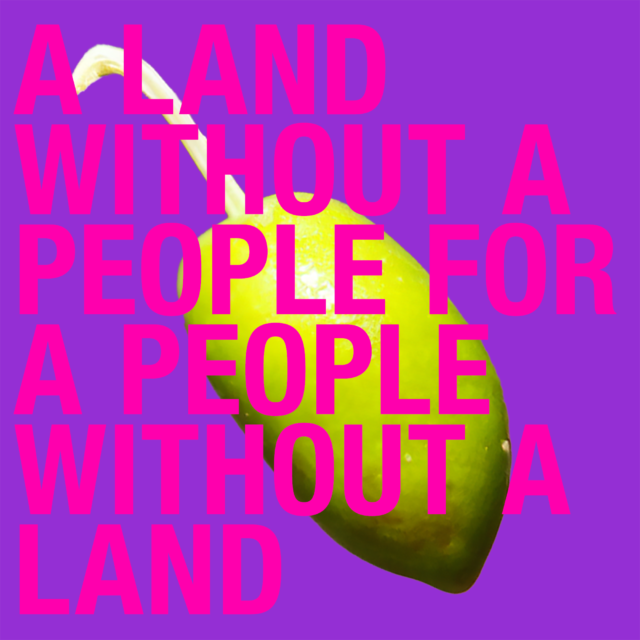THE FINE ART OF GENTRIFICATION REVISITED, 1984-2024
Forty years ago, in their influential article ‘The Fine Art of Gentrification’ (published in October Magazine, Winter 1984), Rosalyn Deutsche and Cara Gendel Ryan explored the complex political economy of gentrification and the eviction of thousands of Black and Latin American East Village residents led by the predominantly white art world. While examining neoliberal transformation, Deutsche and Ryan highlighted the art scene’s role in gentrification—its exuberant celebrations, discourses of revitalization, and rehabilitation. They also highlighted a corresponding shift in art history from experimental critical art practices to commercial and opportunistic formalism, disregarding the ongoing urban social struggles for the sake of art. Art critics, gallery directors, and museum curators eagerly promoted East Village artists as avant-garde settlers who brought culture to an otherwise perceived cruel and wild urban setting. The authors drew a comparison between this attitude and nineteenth-century Zionist settlers, encapsulated by the slogan “a land without a people for a people without a land,” demonstrating a profound disregard for the local residents.
No one was there.
One can argue that forty years after Deutsche and Ryan authored their article, the gentrification phenomenon has entered a new phase, prioritizing profit over public interest; with little or no oversight. The city was opened for large-scale luxury real estate developments, effectively changing the fabric of neighborhoods. The city is no longer affordable for its working classes. Within this new urban scape, the art market morphed into a luxury mall for the ultra-wealthy, enfolded with speculation and investor-feeding frenzies. Despite opposition from cultural workers, with their shiny new building developments, museums and academia, ironically, became complicit contributors to this makeover, serving as a legitimization ground for the rich and wealthy.
Contrary to a loud chorus of laissez-faire fanatics and market fundamentalists, free markets often eliminate competition, homogenize cultures, and promote bad taste. Neoliberal capitalism operates just like Zionist (or Islamist, or Christianist) settlers; they arrive like a tsunami, occupy, appropriate, exploit, and financialize living and non-living things with no apology. It is no coincidence that we have witnessed a consolidation of galleries into a handful of mega-galleries, leading to artistic monoculture and homogenization, as smaller galleries and alternative spaces struggle to compete with the resources and influence of these titans. For instance, Gagosian, David Zwirner, or Hauser & Wirth have international spaces comparable to large museums; they employ curators, organize curated group shows, run educational and public programming, and with their publishing houses and media production, they have an extended global outreach. These mega galleries are no longer unassuming commercial venues for art to be showcased and sold, but, as Zwirner puts it, they have become “cultural platforms.”
Over-production is colonization.
Helen Molesworth, curator and host of David Zwirner’s Dialogues podcast and videos, recently highlighted the “ruthless efficiency,” “straightforwardness,” and “unambiguous” nature of this new gallery system. Through multifaceted public programming and knowledge production, mega-galleries explicitly blur the distinctions between private and public, commercial endeavors, civic engagement, and philanthropy. They no longer solely rely on museums and academia as independent arbiters of art and culture. Instead, they set the market trends, control the narrative, cultivate their audience, and simultaneously position themselves as contributors to societal good.
Concerns around the commodification of art are nothing new; markets existed before the era of neoliberal transformation. However, under the “ruthless efficiency” of financialization, every aspect of cultural life is connected to a cost-benefit scheme, effectively placing the public under the conservatorship of brokers—and yes, a Brittney Spearsreference. Whatever is small, alternative, experimental, or outsider is left to struggle. This gentrification has no boundary and expands its horizon with extreme hunger. “Cultural platforms” are the post-capitalist factories where deal desire is manufactured, and deals are done.
Every political era produces its aesthetic forms.
In 2008, when Barack Obama was elected as president, The New Museum added a portrait of Michelle Obama to an existing exhibition: “Live Forever: Elizabeth Peyton.” The election of the first black U.S. president, amidst the thick of the financial crises, was a celebratory moment with hope and anticipation. In 2018, Kehinde Wiley unveiled the presidential portrait of Barack Obama, which marked the end of his presidency under which the ‘racial wealth gap’ increased, corresponding to a considerable decrease in black owned housing, while the top 1% and Wall Street enjoyed significant financial benefits.
These days, while strolling through art fairs and galleries in New York City, one cannot help but notice the intoxicating smell of oil paint drifting from the white cubes. Paintings–whether small or large, colorful or monochromatic, infused with figuration, reminiscent of post-neo-abstract expressionism and realism–are ready to be packaged and shipped worldwide, from fair to fair. Painting, as a decorative art form, expresses power, displays its wealth, status, and influence, and is intricately linked to the prevailing inequalities of our world. Within this unjust system of symbolic and material exchanges (free-market), ethno-racial diversity is assembled as assortments. Eventually, art morphs into sad objects stored in art ports and imprisoned within investment portfolios.
In his prophetic 1944 book “The Great Transformation,” Karl Polanyi argues that when land, money, and labor are commodified, the essential elements of social structure and human existence suffer ethical corruption: land sustains irreversible damage, money shifts from being a medium of exchange to an evil tool for speculation, and bodies face exploitation and slavery. Likewise, reducing art to a tradable commodity diminishes its unique potential within society, its spirituality, and its capacity to provoke critical thinking and challenge social norms and traditions. This relentless emphasis on marketability contradicts freedom of expression and experimentation, pushing artists towards creating works that cater to market trends and producing gallery works that are finished and framed as luxury products.
Deutsche and Ryan had already pointed out that a similar art historical shift corresponding social-political-economic change with an “unapologetic embrace of commercialism, opportunism” marking a simultaneous abandonment of the radical art movements prevalent in the preceding two decades (the 1960s and 1970s). They contended that “this doctrine is embodied in a dominant neoexpressionism which, despite its pretentions to pluralism, must be understood as a system of rigid and restrictive beliefs” (pages 105-6).
Since they authored their article, the neoexpressionist mottos of “individual liberation,” “creativity,” and “self-expression” became the central tenets of contemporary capitalist society and the driving force of neoliberal command and control. “Creativity” is the toxic ingredient for the “creative class,” finance and tech bros, smug lawyers, PR, and real estate agents, all claiming to provide revolutionary “creative solutions” for their clients.
Capitalism is no longer interested in final products but rather in creating long-lasting “creative platforms” where the exploitation of things can be performed nonstop. These days, despite being produced by diverse social actors, the New York City art scene is dominated by excessively framed/polished art objects, primarily paintings—this era of consolidation is defined by quasi-political, individualistic, and often regressive 20th-century formalism. The over-production of commodity/objects/paintings invades and suffocates possibilities, leaves little room for performative, collective, research-based or social practice work, and, in fact, undermines the very nature of artistic production exercised globally today. Furthermore, even though wrapped with good intentions, in the closed circuit of the predominantly Judeo-Christian white art world, the incorporation of “BIPOC artists” into its ranks does not foster diversity and equality. On the contrary, paintings, mostly incorporating an updated formalism, function more as a strategy to effectively conceal the deep-seated social injustices prevalent in society. This self-Orientalizing signals a degree of social awareness without genuinely addressing the persistent calls for substantial change demanded by activist communities. While the market reduces art into commodities, it creates hierarchies between things and people; even brave conceptual and political gestures are reduced to individualistic anecdotes with excessive framing and objectification.
These days, everyone murmurs—too many paintings. Fresh, old, rediscovered, restored, and repurposed, they are everywhere. Then, there was the NFT extravaganza. Abruptly, the anti-institutional, anti-commercial, and militant spirit of early new media/net art/post-internet works which grew in the late 1990s and early 2000s was abandoned and NFTs were introduced as the ultimate financialization scheme. Devoid of any serious artistic attitudes, the NFT market became a playground for rampant speculation, manipulation, and greed. Seeing many respected artists join this Ponzi scheme, peddling digital peep shows and producing eye-cakes, was just heartbreaking.
It’s becoming increasingly rare to encounter the wondrous possibilities of collaborative, collective, social, performative, or research-based work in the city. In fact, the scene, which is controlled by conservative trustees and collectors, has skillfully overlooked what has been brewing internationally. For instance, the radical propositions presented by Ruangrupa at Documenta 15 were met with great aversion, as the curatorial collectives at Documenta simply did not provide any platform for commercial New York City gallery artists.
Since 1984, there has been a great deal said about gentrification and its political actors and victims. Contrary to some misinterpretations, Deutsche and Ryan are not blaming individual artists for gentrification. Instead, they underline the regressive spatial political economy where both form and content of displacement are produced, justified and distributed; yet they criticize artists who are ‘indifferent’ toward class struggle and social injustices, and their strategic exploitation and aestheticization of victims.
Art history is full of artist-heroes who changed the rules of the game only for themselves. We need no heroes, but to disrupt or eliminate the game itself; for collective emancipation, we need to remain ethically diligent, intimately critical, and have some collective attitude. Markets are not everything.
Ceasefire Now!






